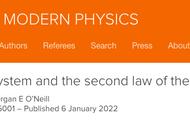原文标题:
Climate finance
Carbon sinks
Offset markets struggle in the face of surging commodity prices
Prices of carbon offsets are too low
[Paragraph 1]
The loamy soil and dense jungle of the Sumatran rainforest in Indonesia can store an average of 282 tonnes of carbon dioxide per hectare. If a group of climate-conscious airline passengers were to find a hectare of such forest at risk of being cut down for palm oil and were able to stop that happening, they would offset the amount of greenhouse gases emitted by 175 passengers flying, economy class, from London to New York and back.

[Paragraph 2]
Demand for such carbon offsets is forecast to rocket over the next couple of decades, as businesses attempt to make good on their promises to reach net zero carbon emissions. Last year an estimated $1bn was spent on offsets. McKinsey, a consultancy, predicts that the size of the market could expand by a factor of 15 by 2030 and 100 by 2050. Although a few projects use novel technology to suck carbon dioxide out of the air altogether and store it underground, most offsets promise to subsidise renewables or pay for carbon sinks, such as forests, to be restored or preserved. Such “nature-based” offsets can include protecting wetlands in Colombia, or restoring peatland in Scotland.
[Paragraph 3]
But the market is not working. The price of a carbon offset is far too low. The opportunity cost of leaving land uncultivated is rising. A hectare of Sumatran rainforest, for instance, could produce around 2.5 tonnes of palm oil a year, and palm-oil prices have risen to $1,520 a tonne, from around $1,000 a year ago. But the price of nature-based offsets has fallen this year, to $10 per tonne of carbon dioxide, according to contracts traded on the Chicago Mercantile Exchange.
[Paragraph 4]
Deforestation remains economically rational. Because a palm-oil plantation still captures around 170 tonnes of carbon dioxide per hectare, leaving the land uncultivated offsets only 112 tonnes. An offset price of $10 means that, if the accounting is done properly, selling offsets yields revenue of only $1,120—not enough to compensate for the potential loss of about $3,800 in annual sales of palm oil. At current prices, says Ariel Perez of Hartree Partners, a trading firm, the only agricultural activity that is less profitable than preserving forests is harvesting rubber in West Africa. For as long as the price of an offset remains below $20, cattle farming in the Amazon will remain attractive.
[Paragraph 5]
Why has the price of offsets fallen? Some cap-and-trade schemes, in which companies must buy permits for their emissions, allow for a certain amount of emissions to be offset. By and large, however, offsets are not required by regulation. Firms and individuals seeking to reduce their carbon footprints choose to buy them, meaning that the demand for offsets is largely driven by ethical or public-relations imperatives. As the war in Ukraine began and attention turned away from climate change, offset prices declined.
[Paragraph 6]
Another problem is that there are few internationally agreed rules for offsets. A report published earlier this month by Carbon Direct, a consultancy, said that “the voluntary carbon market largely consists of projects of questionable quality.” A surplus of older and less reliable offsets hangs over the market, depressing prices.
[Paragraph 7]
It is not possible to truly know what would have happened had an offset not been paid for. “Most projects over-report and some don’t reduce emissions at all,” says Barbara Haya of the University of California, Berkeley. “It’s really hard for people to know what is real and what isn’t.”
[Paragraph 8]
Some attempts are being made to bring clarity. Proposals from the Integrity Council for Voluntary Carbon Markets, an independent committee, are expected later this year. They are likely to emphasise the need for “additionality”, meaning that the reduction in emissions claimed must be a direct result of the offset. Paying for green-energy installation, for instance, would not count as a genuine offset if the project were viable without the offset payment. Nor would a forest that was never going to be cut down in the first place. Checking that offsets meet the criterion, though, will remain a daunting task.
(恭喜读完,本篇英语词汇量约754左右)
原文出自:2022年5月21日《The Economist》Finance & economics版块。
精读笔记来源于:自由英语之路
本文翻译整理:Fei Min
本文编辑校对: Irene
仅供个人英语学习交流使用。
【补充资料】(来自于网络)
碳汇carbon sink,是指通过植树造林、植被恢复等措施,吸收大气中的二氧化碳,从而减少温室气体在大气中浓度的过程、活动或机制。2003年12月召开的《联合国气候变化框架公约》第九次缔约方大会,国际社会已就将造林、再造林等林业活动纳入碳汇项目达成了一致意见,制定了新的运作规则,为正式启动实施造林、再造林碳汇项目创造了有利条件。
2020年10月28日,《自然》科学期刊上一个国际团队的研究报告也再次表示,中国的西南地区和东北地区的“碳汇”,占了中国整体陆地的35%还多一点。
碳补偿市场carbon offsets market,“碳补偿”就是carbon offsets也叫碳中和,也就是通过植树或其他环保项目抵消人们的日常活动直接或间接制造的greenhouse gas emissions(二氧化碳排放量)。

碳足迹Carbon Footprint,是指企业机构、活动、产品或个人通过交通运输、食品生产和消费以及各类生产过程等引起的温室气体排放的集合。它描述了一个人的能源意识和行为对自然界产生的影响,号召人们从自我做起。已有部分企业开始践行减少碳足迹的环保理念。
【重点句子】(3个)
The opportunity cost of leaving land uncultivated is rising.
闲置土地的机会成本在升高。
Deforestation remains economically rational.
退林为耕从经济角度看仍然是合理的。
A surplus of older and less reliable offsets hangs over the market, depressing prices.
陈旧的、不靠谱的碳补偿大量充斥着市场,从而抑制了碳补偿价格。

自由英语之路
,











